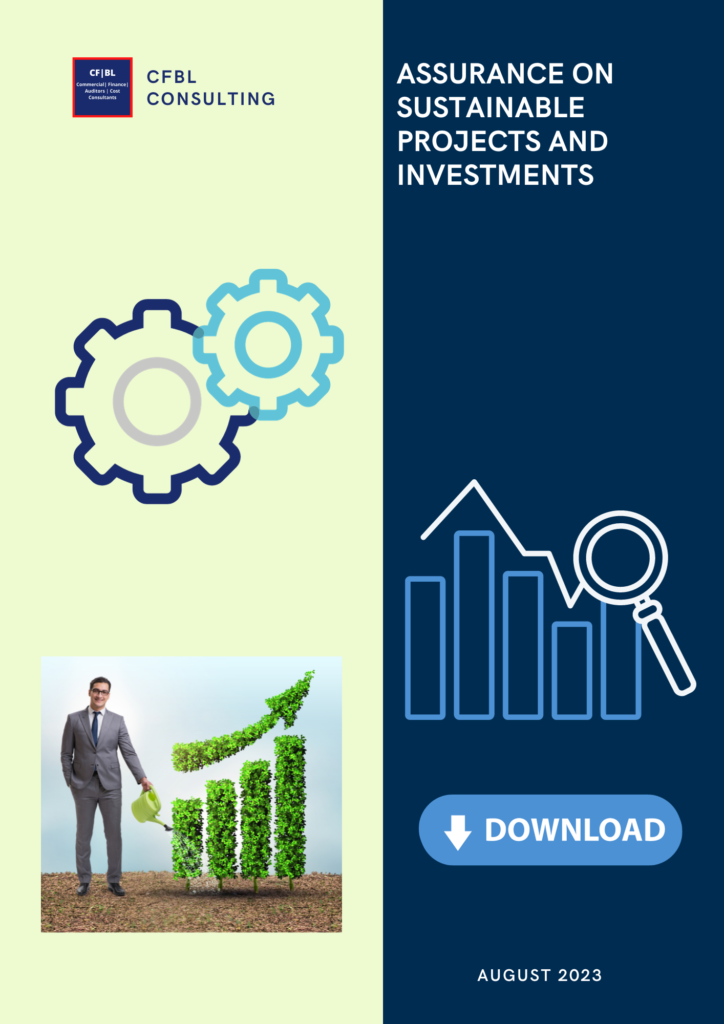-Cecelia Fadipe
Challenges in financial strategy
Financial strategy is not just a necessity; it is the lifeblood that fuels business growth, empowers decision-making, and ensures long-term sustainability in a dynamic and competitive market
Overview
In this report, CFBL Consulting examines key components of financial strategy and planning, that are needed to meet short-term financial or operational obligations, to fund Capex investments that can generate future cashflows or to effectively execute dividend sharing and profit reinvesting decisions.
Introduction
- In today’s business landscape, financial strategy has emerged as a top challenge for organisations across industries. As businesses navigate a dynamic and ever-changing environment, they must grapple with numerous factors that impact their financial health and long-term success. From managing limited resources to accessing capital, mitigating risks, and driving performance, a robust financial strategy is essential.
- This strategy serves as a roadmap for organizations, enabling them to make informed decisions, allocate resources effectively, and adapt to market shifts.
- In this article, we delve into the significance of financial strategy as the foremost challenge for all businesses, highlighting its crucial role in fostering growth, ensuring profitability, and navigating uncertainties.
- By addressing this challenge head-on, businesses can position themselves for sustained success in an increasingly competitive marketplace.
- The importance of financial strategy has begun to be questioned by the emergence of financial innovation, which has led to a decline in the stability of money demand.
Challenges in financial strategy
A well-planned financial strategy can serve as a road map to success, whether your goals are to increase your wealth, save for retirement, or expand your business.
Robust Financial Strategy
Along with a quickening rise in competition, technological advancements, new investments, saving, maximizing profit, hedging, changing consumption patterns, and the rising expectations of customers of businesses and businesses in the sector, all play significant roles in the development of financial innovations. Additionally, as practically all production and consumption activities require financial inputs, future finance advancements may favour the economy.
- Businesses are currently facing a wave of challenges in a variety of areas such as competition, technological advancement, supply chain efficiency, scaling and risk management.
- However, establishing a stringent financial strategy is pivotal in navigating through this turbulent business environment. We can see why financial strategy a top priority should below.
- Due to economic volatility, technological upheaval, evolving market dynamics, and the necessity for effective risk management, financial strategy has emerged as the #1 problem for firms.
- Organisations must prioritize developing and implementing good financial strategies aligned with their goals and flexible enough to respond to changing conditions if they want to succeed in the ever-changing business landscape.
- According to Gartner, a financial strategy combines financial planning with strategic planning. Creating a functional roadmap that assesses current resources, costs, and budgets and aligns them with future requirements to achieve the company’s mission and goals.
- In a recent Survey, they state that in 2023, 90% of leaders plan to maintain or double their levels of funding for growth.
Strategies for Resilient Business Growth
Resilient business growth hinges upon strategic financial planning and adaptability, empowering organizations to navigate uncertainties and seize opportunities in an ever-changing marketplace
Economic Volatility
- Because of the peculiar nature of the COVID-19 epidemic and the sharp drop in crude prices, the financial sector is now more exposed than ever. The COVID-19 pandemic and the recent reduction in oil prices are two major contributors to sovereign risk for the global financial markets.
- Additionally, as the pandemic spreads around the world, dangers to financial stability have so far been kept in check thanks to continuing policy support. But in several industries, financial vulnerabilities are still high. Asset valuations are inflated in several market groups, and concerns about upside risks to the inflation forecast continue. Although funding costs have increased, emerging and frontier markets still have significant financing needs.
- As a result, it makes it logical to consider the use of flexible business models. Additionally, organisations must adapt to the changes happening due to the environment’s volatility, the market’s scale, and its dynamics.
Shifting Market Dynamics
- The implementation of clearly specified tasks is the primary emphasis of contemporary businesses. The pursuit of hyper-specialization results in a palpable form of “tunnel vision,” which, on the one hand, permits the person to strive for excellence in the responsibilities entrusted to them.
- On the other side, it frequently results in an inability to adjust to impulses from a tumultuous environment. In addition, they help persons in positions of authority manage and make decisions.
- As markets continue to transform, embracing innovative financial strategies becomes the linchpin for achieving resilience in an ever-changing landscape. By fostering agility, embracing digitalization, and leveraging strategic partnerships, organizations can forge a path towards sustainable growth, fortified by a resilient financial foundation.
- Through these concerted efforts, businesses can weather uncertainties and unlock their full potential, positioning themselves as leaders in their industries. The quest for resilient business growth is an ongoing journey, and it is through visionary financial strategies that organizations can chart a course of enduring success.
Adapting to Innovation and Safeguarding Business Operations
Embracing innovation is not just a choice, but a necessity for businesses to thrive. By adapting to innovation and safeguarding business operations, organisations can navigate disruptive landscapes, stay ahead of the curve, and secure their position as industry leaders
Technology Disruption
- Companies need to offer various routes for new ideas in terms of their sources. They must create a roadmap for digital innovation including important tasks and projects. There are three different options:
- Top-down innovation is necessary to create disruptive new company models. It’s challenging and dangerous to win these significant wagers.
- Open innovation, in comparison, is diffuse and bottom-up: we collaborate on innovations with other businesses, start-ups, and academia. We also receive a lot of inspiration for innovative data models from these sources.
- Bottom-up incubation is also used. On the one hand, we participate in start-up companies through corporate venturing activities, both through acquisitions and through minority shareholdings.
- In summary, there are three basic ways that innovation occurs in the context of digital transformation: strategic innovation from the top aiming at creating novel, disruptive business models; open innovation and incubation; and bottom-up, which can result in both incremental and radical innovation.
Risk Management
- A plan of action or set of rules created to address different types of financial risk is known as a financial risk management strategy. Any company or person must have a plan in place to manage the financial risks that come along with being active in the economy and financial system. Challenges ranging from internal upheavals to global catastrophes have jeopardized organizations’ survival.
- Currently, attention is focused on how businesses handle certain circumstances. Risk management in global supply chains is receiving more attention as a result of the significance of comprehending potential risks and other options to respond and adapt to uncertain, chaotic, and changing environments.
- The ability to manage disruptions, which can considerably impact resilience and business continuity, by identifying, analyzing, responding to, and controlling vulnerabilities. But risk management is a complicated task with many difficulties. Operations have been improved by the increased interconnection of supply chain participants, but it has also made businesses more dependent on one another, making them more susceptible to disruptions.
Navigating Financial Stability in Volatile Times
Amidst volatile times, navigating financial stability requires adaptability and strategic foresight. By embracing proactive measures, businesses can weather uncertainties, mitigate risks, and ensure a solid financial foundation for long-term success and resilience.
Unpredictable Market
- The financial markets have been very volatile in recent years, making it extremely difficult to navigate market uncertainties. This can be demonstrated by the S&P 500 experiencing intraday moves of at least 1% twice as much as the average since 1950.
- Formulating a strong financial strategy in an ever-changing climate can be very tricky and essential in establishing the success of the company to cope with market volatility. Businesses are influenced by external factors such as interest rates and inflation. These factors need to be considered when creating a financial strategy.
Cashflow Management
- Managing cash flow is vital to ensure day-to-day operations and seizing growth operations. Research shows that 82% of small businesses fail due to cash flow problems.
- With the recent pandemic, forecasting cash flows has been difficult, and firms must ensure they have enough in reserves to account for changing environments.
- The COVID-19 pandemic has highlighted the importance of cash flow forecasting and contingency planning. Businesses need to anticipate and adapt to changing circumstances to safeguard their cash reserves, enabling them to weather unforeseen challenges and maintain stability during times of uncertainty.
- Effective cash flow management is crucial for maintaining the financial health of businesses. It involves monitoring and optimizing the inflow and outflow of cash to ensure the availability of funds for essential operations, such as paying employees, suppliers, and bills.
Optimizing Funding and Ensuring Legal Compliance

Optimising funding while ensuring legal compliance is a delicate balancing act for businesses. By strategically navigating financing options and adhering to regulatory requirements, organisations can secure the necessary resources to propel growth, while safeguarding their reputation and maintaining ethical business practices
Current Economic Turbulence
- The current economic turbulence is a result of rising inflation, recent political unrest, and increasing interest rates.
- The consequent energy crisis, Brexit and pandemic-related pressure on supply chains are further intensifying the crisis.
- As a result, the factors below related to financial strategy are significantly impacted:
Capital Structure Financing
- Having the right balance between debt and equity is essential for businesses. This impacts the firm’s cost of capital and financial flexibility.
- Striking a balance between debt and equity and managing debt obligations pose significant challenges for financial strategists.
- Effective financial strategy requires businesses to proactively identify and address potential legal compliance risks.
- By staying abreast of evolving regulations, adhering to ethical standards, and implementing robust compliance measures, organizations can mitigate legal and regulatory challenges, safeguard their reputation, and ensure sustainable growth.
Regulatory Compliances
- Financial strategies must adhere to the legal and regulatory compliance specific to the industry and area. Non-compliance cost US businesses almost $2 trillion annually, so it must be adhered to.
- Compliance with financial reporting standards adds complexity to financial decision making and requires expertise to ensure laws are not broken whilst optimising business performance.
- Effective financial strategy includes comprehensive risk management practices that encompass the identification, assessment, and mitigation of financial risks. By proactively analyzing and addressing potential risks such as market volatility, credit risk, operational risk, and liquidity risk, businesses can safeguard their financial stability, protect assets, and enhance overall resilience in the face of uncertainties.
Evaluating Success and Driving Business Growth

Evaluating success and driving business growth go hand in hand. By setting clear goals, measuring key performance indicators, and continuously assessing progress, organisations can gain insights, make informed decisions, and pave the path for sustainable growth, ultimately propelling them towards greater success
Financial Performance Measurement
- Deciding on financial performance and measuring key metrics is essential in measuring a company’s financial success.
- Performance indicators could include Return on Investment (ROI), profitability, liquidity, and efficiency ratios. Selecting the correct benchmark for these ratios can be a challenging task.
Mitigating Financial Risks: Effective Regulatory Compliance Strategies
There are several compliance and regulatory requirements to be considered when creating a financial strategy. Business finances will often be influenced by key external factors like:
- Increasing interest rates
- Rising Inflationary pressures
- Fluctuating exchange rates
Measuring financial performance is an essential part of assessing a company’s profitability and success. It entails the systematic evaluation of several financial metrics and indicators to analyse the overall efficiency, effectiveness, and health of the company’s finances. Organisations may set reasonable goals, make educated decisions, and pinpoint areas for development by tracking and analysing their financial performance.
Building Resilient and Future-Proof Businesses

Building resilient and future-proof businesses requires strategic financial planning and adaptability. By embracing innovation, mitigating risks, and aligning financial strategies with long-term goals, organisations can navigate uncertainties, seize emerging opportunities, and forge a path towards sustainable growth.
Long-term Sustainability
- The financial strategy needs to align with the long-term goals of the business. Currently, 88% of publicly traded companies have ESG initiatives in place and therefore it is important for businesses to have a long- term sustainable approach in mind.
- This can include ESG requirements, research and development, and marketing. Managing this balance between short term financial gains and a sustainable financial operating model.
- Long-term sustainability is a critical consideration in financial strategy, requiring businesses to integrate environmental, social, and governance (ESG) principles into their operations.
- By embracing sustainable practices, businesses can not only mitigate risks associated with environmental impact and social responsibility but also unlock opportunities for innovation, cost savings, and enhanced brand reputation.
- Financial strategy plays a pivotal role in building resilient and future-proof businesses. It involves anticipating and adapting to market shifts, technological advancements, and changing consumer preferences.
- By continuously evaluating and adjusting financial strategies, organizations can proactively position themselves for long-term success, ensuring their viability and competitiveness in an evolving business landscape.
Frequently asked
Frequently Asked Questions
Organisations can benefit from the financial team’s expertise, improved decision-making, financial accumen discipline, and advisory, fostering sustainable growth by working with the company as a finance business partner.
Why is it important to establish the finance team as a business partner?
Establishing the finance team as a business partner is important because it enables collaboration and leverages financial expertise to drive strategic decision-making. Businesses can benefit from their financial insights, analysis, and specialized knowledge by involving the finance team in key business discussions and decision-making processes. This partnership facilitates proactive planning, cost optimisation, effective resource allocation, risk management, and compliance. It also enhances communication between finance and other departments, fosters financial accountability, and drives financial transformation. Positioning the finance team as a business partner strengthens the organisation’s financial foundation, promotes informed decision-making, and supports long-term growth and success.
What does it take to create an effective financial strategy?
An all-encompassing strategy that includes several crucial components is needed to develop an efficient finance strategy. It entails carrying out a comprehensive examination of the company’s financial position, establishing precise financial goals that are in line with the larger business objectives, and creating plans of action to reach those goals.
Understanding the market, business trends, and competitive environment in-depth is necessary for developing an efficient financial plan.
Strong financial planning, budgeting, and forecasting procedures are also necessary, as are measures for efficient risk management.
Why is financial planning essential for businesses?
Several factors make financial strategy essential to a company’s success:
- Long-term financial objectives and sustainability are facilitated by it.
- It offers a strategy for managing resources and making wise financial choices.
- It facilitates efficient cash flow management and guarantees sufficient liquidity.
- It empowers companies to select wise investments and exploit profitable possibilities.
- It supports risk management and capital structure optimisation.
- Profitability and financial performance are improved.
- Strategic planning is facilitated, and financial and corporate goals are aligned.
What are some efficient methods for forecasting and budgeting during the creation of financial strategies?
- Analysis of historical data: Examine patterns and historical growth rates by examining past financial data and trends.
- Create financial models to simulate various situations and evaluate their effects on financial results.
- Utilising rolling forecasts, which are continuously updated throughout the year.
- Market Research and Analysis: Conduct in-depth market research to comprehend market dynamics, consumer preferences, and industry trends.
- Benchmarking: To learn more, evaluate your financial performance in comparison to that of similar companies or rivals.
- Continuous Monitoring and Review: Analyse actual financial performance in comparison to predictions and budgets on a regular basis.
What advantages could an effective financial plan provide?
- Strengthened resilience and financial stability.
- Sustained growth and increased profitability.
- Allocation of funds in the most effective way.
- Operational efficiency and cost improvements.
- Better management of cash flow and liquidity.
- Capacity for adapting for to market changes.
- Access to financing and increased investor trust.
- Less expensive interest rates and debt.
- Accurate financial data to inform strategy
- Creating long-term value and competitive edge.
Reference
- CFI team (2022) Financial Risk Management Strategies, Corporate Finance Institute. Available at: https://corporatefinanceinstitute.com/resources/risk-management/financial-risk-management-strategies/.
- International Monetary Fund (2021) Global Financial Stability Report, October 2021, IMF. Available at: https://www.imf.org/en/Publications/GFSR/Issues/2021/10/12/global-financial-stability-report-october-2021.
- Mateusz Tomasz Tomanek, Cieslinski, W. and Polasik, M. (2022) Digital Business Models in Sport, Routledge eBooks. Informa. Available at: https://doi.org/10.4324/9781003270126.
- Sonmez Cakir, F. and Adiguzel, Z. (2022) ‘Effects of Innovative finance, strategy, Organization and performance: a Case Study of Company’, International Journal of Innovation Science, ahead-of-print(ahead-of-print). Available at: https://doi.org/10.1108/ijis-08-2021-0146.
- Xiuzhen, X., Zheng, W. and Umair, M. (2022) ‘Testing the Fluctuations of Oil Resource Price volatility: a Hurdle for Economic Recovery’, Resources Policy, 79, p. 102982. Available at: https://doi.org/10.1016/j.resourpol.2022.102982.
- https://www.plantemoran.com/explore-our-thinking/insight/2023/01/how-did-last-years-equity-market-volatility-compare-to-history#:~:text=Volatility.,double%20the%20average%20since%201950.
- International Monetary Fund (2021) Global Financial Stability Report, October 2021, IMF. Available at: https://www.imf.org/en/Publications/GFSR/Issues/2021/10/12/global-financial-stability-report-october-2021.
- Mateusz Tomasz Tomanek, Cieslinski, W. and Polasik, M. (2022) Digital Business Models in Sport, Routledge eBooks. Informa. Available at: https://doi.org/10.4324/9781003270126.
- Sonmez Cakir, F. and Adiguzel, Z. (2022) ‘Effects of Innovative finance, strategy, Organization and performance: a Case Study of Company’, International Journal of Innovation Science, ahead-of-print(ahead-of-print). Available at: https://doi.org/10.1108/ijis-08-2021-0146.
- Xiuzhen, X., Zheng, W. and Umair, M. (2022) ‘Testing the Fluctuations of Oil Resource Price volatility: a Hurdle for Economic Recovery’, Resources Policy, 79, p. 102982. Available at: https://doi.org/10.1016/j.resourpol.2022.102982.
- https://www.plantemoran.com/explore-our-thinking/insight/2023/01/how-did-last-years-equity-market-volatility-compare-to-history#:~:text=Volatility.,double%20the%20average%20since%201950.
- https://www.score.org/resource/blog-post/1-reason-small-businesses-fail-and-how-avoid-it#:~:text=82%25%20of%20small%20businesses%20fail,will%20%E2%80%93%20of%20several%20underlying%20causes.
- https://hyperproof.io/resource/compliance-statistics-2020/
- https://www.perillon.com/blog/esg-statistics




